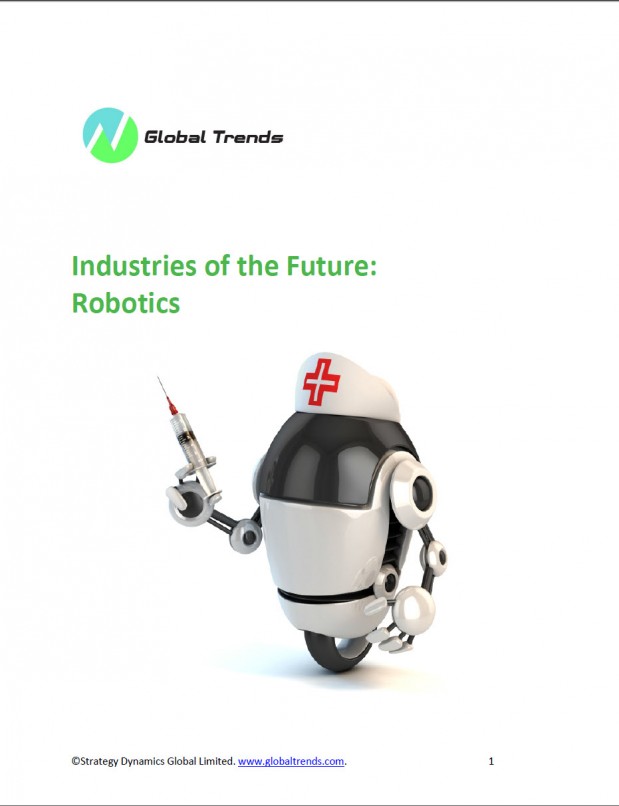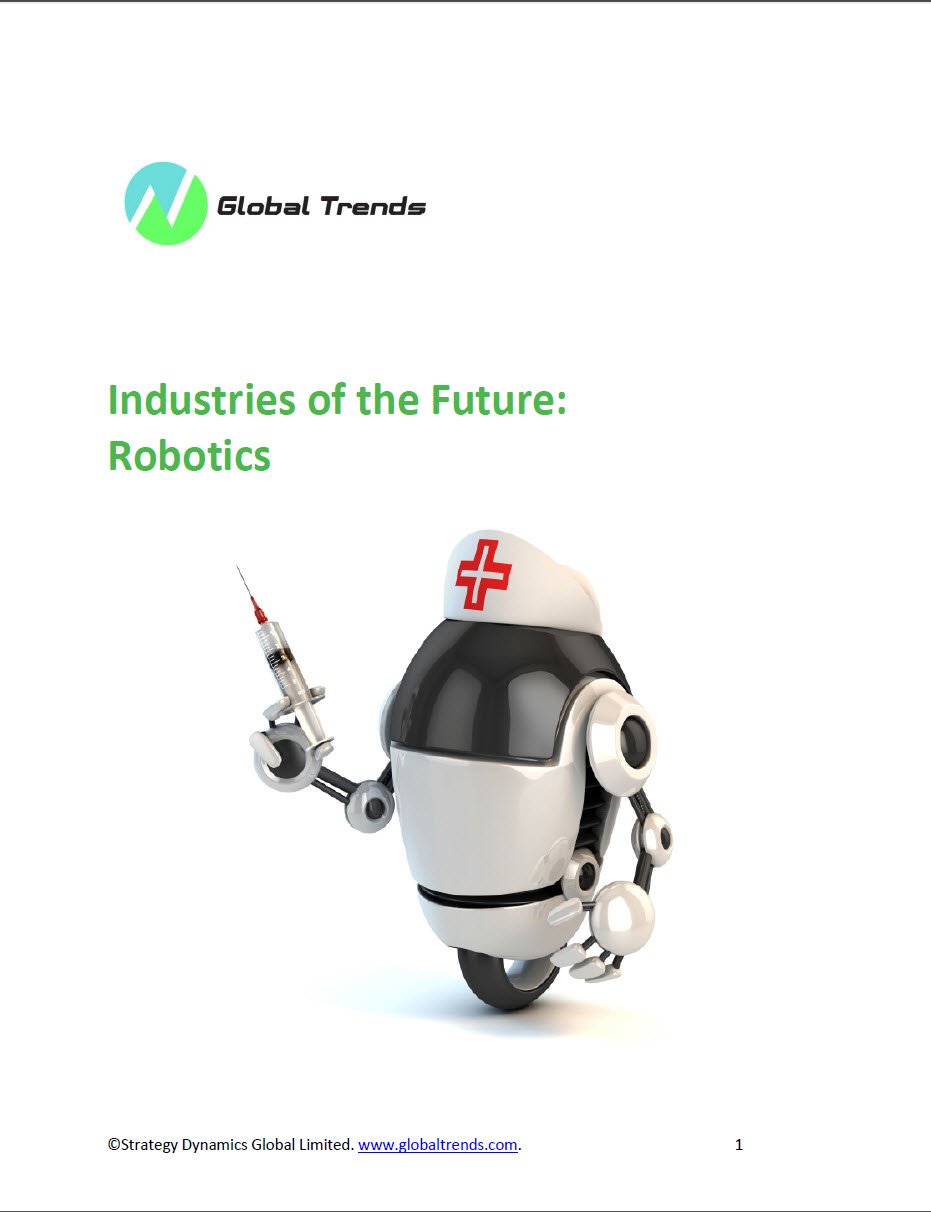

Industries of the Future: Robotics
Rapid advancement in technologies from nanotechnology to biotechnology are driving dramatic changes in the way we live, work and organize our societies. Among these technologies, one of the most potent forces for change is robotics and automation, including use of smart machines and the rise of the internet of things. Already robotics is influencing many aspects of everyday life. Think self-driving trains, assembly line robots, automated fuel pumps, bank ATMs, and self-service checkout lanes. The next phase of the robotics revolution will increase the number and complexity of the tasks that they can take on – or take over from human workers. Will this industry of the future empower us, unleashing our creativity, or will the robots outnumber, outdate, and outthink us? In this report we explore the robotics industry of the future.
-
Rapid advancement in technology is one of the greatest forces reshaping the world. Nanotechnology, biotechnology, neuroscience, genomics, clean technologies, space sciences, smart materials, ubiquitous computers and sensors, artificial intelligence, geoengineering, and information technology are driving innovations that help the world address critical issues such as resource constraints, food security, water access, pandemics, infant mortality, and climate change. They are also the fuel igniting changes in the way we live, work and organize our societies.
Robotics and automation, including use of smart machines and the rise of the internet of things, is entering a new phase as these technologies advance. In its initial stages, this emerging industry of the future has been largely built on passionate researcher and visionary advocates. However, it has become obvious that robotics technology is no longer for the few but a technology permeating our world.
One important reason is changes in global demographics, which are creating imbalances in the global workforce. Despite the fact that the global population projected to grow to 7.6 billion by 2020, many countries are expected to see a decline in the working-age population. In Japan more people are already leaving the labor force than there are people prepared to take over, a challenge that is shared with countries such as the U.S., Russia, Canada, South Korea, China, and many European countries. The healthcare industry, for instance, is already experiencing a lack of healthcare professionals and, according to the WHO, the world will be short of 12.9 million health-care workers by 2035; today, that figure stands at 7.2 million. The need for more workers in some industries is critical and may be alleviated by technological advances in automation and robotics.
Even though these new technologies can empower individuals, businesses and societies there are fears that the human race, in the long term, will be outnumbered, outdated, and outthought by the next generation of robots and smart machines.
In this report we consider:
· How changes in global demographics are driving the need for “robotic workers” in the future.
· How technology advancements are pushing the world towards an era of robotic deployment.
· How robotic technology is impacting existing industries and markets.
· How innovative robotic technologies could impact jobs and skills required for the future.
· How we prepare the workforce for an era of “robotic workers.”
Featured industries where robotics technologies will have a significant impact include: agriculture, healthcare, defense and logistics.
How is your organization preparing for an age of robotic workers and smart machines?
-
Be the first to review “Industries of the Future: Robotics”
You must be logged in to post a comment.






There are no reviews yet, would you like to submit yours?